Hi FREESKIER faithful! My name is Troy Murphy. I’m a 2018 Winter Olympian and ex-mogul skier who left the sport I’ve pursued for my whole life to live out my dream of freeskiing across the world. This year, I’m hitting the road to make that dream a reality. Armed with a snowmobile, camper, camera gear and some buds, I’ll chase snow all winter throughout the North American West. The chronicles of this adventure will be posted here, on FREESKIER.com. Follow along!
Chris and I pulled into Seeley Lake, Montana, with zero beta. We didn’t know where to park the rig, which trailhead to start from, which zones to check out or how the snow and stability was. In this moment, we were truly flying under the “no agenda” flag. Lucky for us we stopped at the right place.
Upon arrival in Seeley, Chris and I swung into the local Polaris dealership so he could buy a new pipe for his snowmobile that would allow him to attach the coveted “can cooker,” a small pot that hooks onto the snowmachine’s exhaust pipe and allows you to cook food (ie. hotdogs) in the backcountry.
Once inside the shop—Kurt’s Polaris—we quickly found that Seeley would be like a home away from home for us sledneck skiers. The owner, Kurt, immediately took us under his wing. He pulled out a map and showed us zones to check out, gave us recommendations on places to eat in town and, most importantly, offered us a spot out back of the shop where we could set up camp for the foreseeable future. Chris and I, both on our first trip to Montana, instantly felt like we’d struck gold.
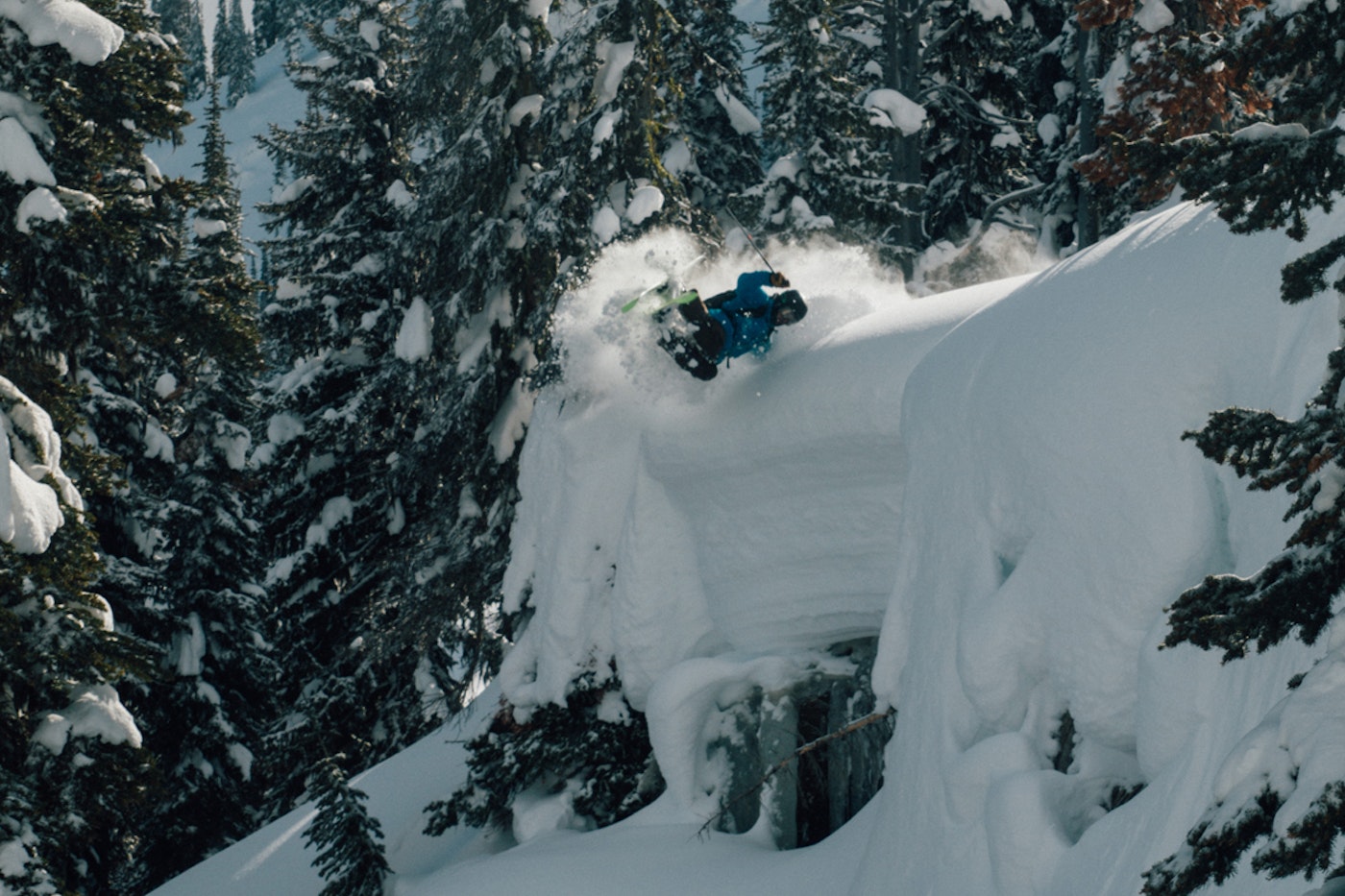
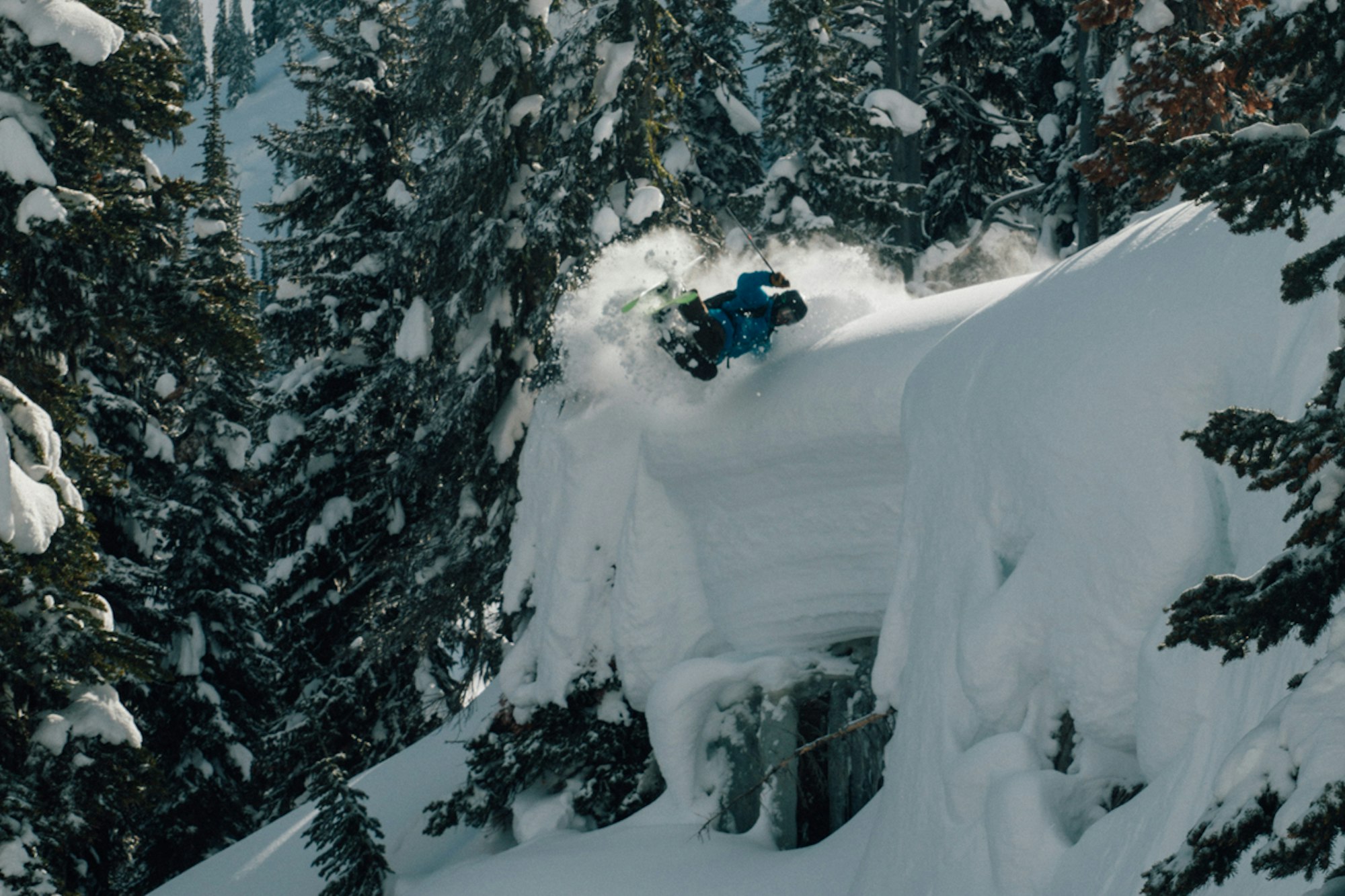
Trying my best to fit in as a modern day backcountry skier with this hand-drag.
The next morning we set out in search of Kurt’s zone, one rumored to be filled with pillows. After getting pretty skunked on pillow skiing in BC, I was eager to try my hand at skiing lines like we see in the movies: drop after drop after drop. It took quite a bit of effort that first day to make it to the spot: It had just snowed a ton prior to our arrival, and without an exact idea of how to get there, route finding proved to be challenging. Eventually, we arose over a clear cut and the zone revealed itself in all its glory.
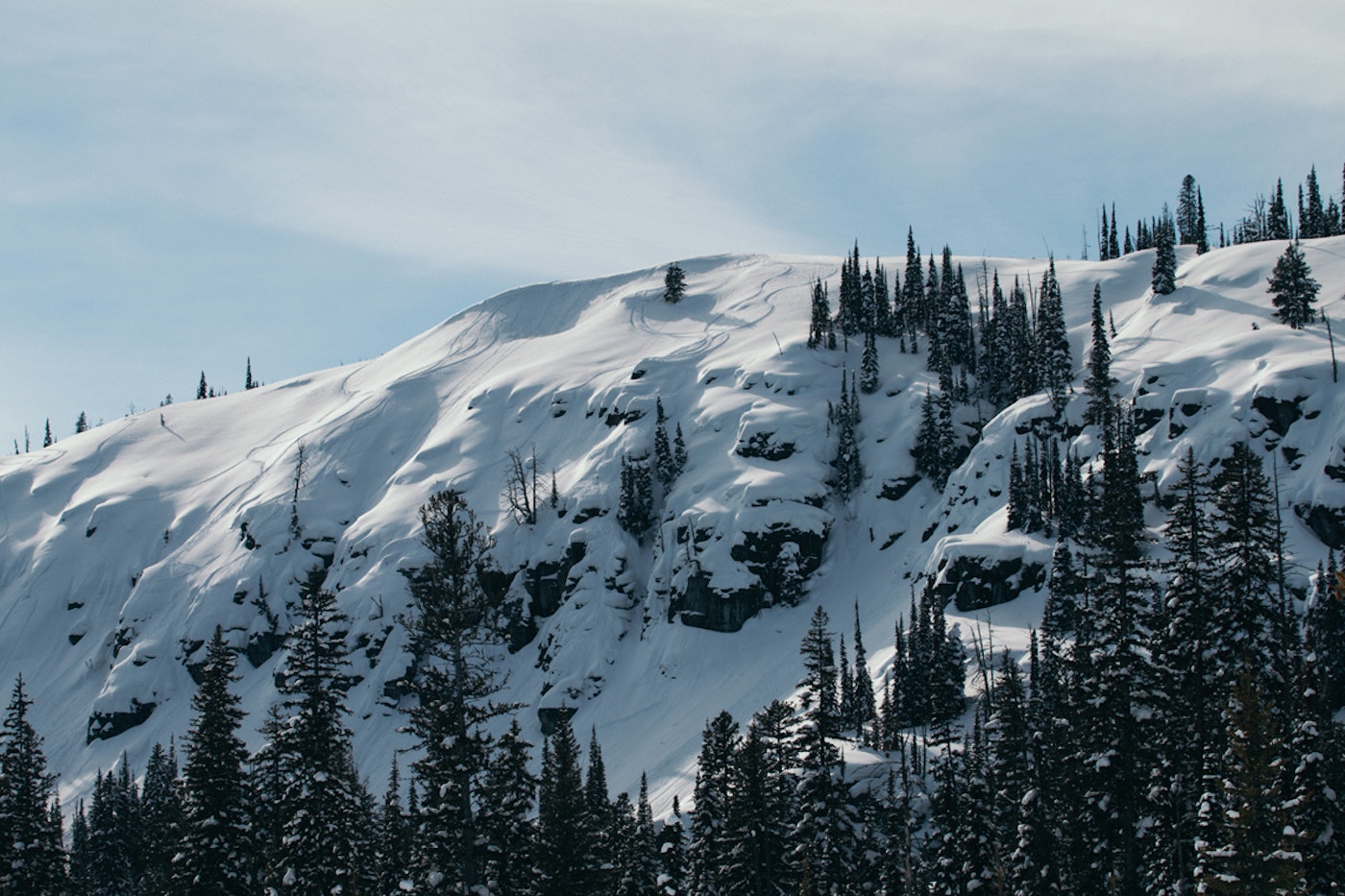
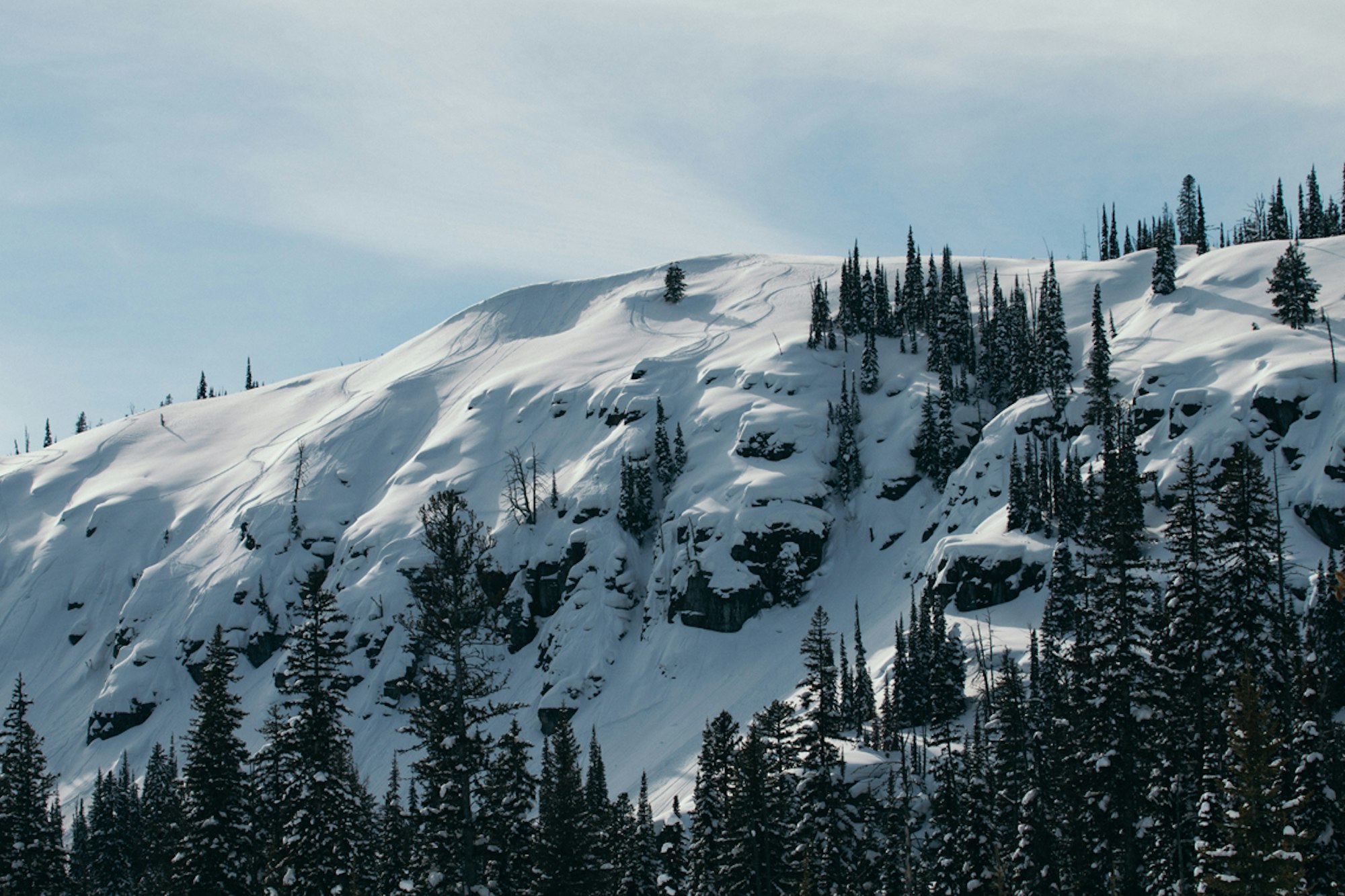
A glimpse at Kurt’s zone recommendation after a day of skiing.
Just like most of the lessons I’ve learned thus far this winter, I quickly discovered that skiing pillows is not as easy as it looks. Being a mogul skier I thought: “How hard could skiing a couple powder bumps be?!” Turns out, it’s quite difficult. Things are way steeper than they look, and the pillows come at you fast, with little or no time to adjust from drop to drop. In this zone, I’ll be honest—I wasn’t really “getting the shot,” but luckily the lines in Kurt’s zone were abundant and we were the only ones there, affording me some time to really dial-in my approach to this new kind of skiing.
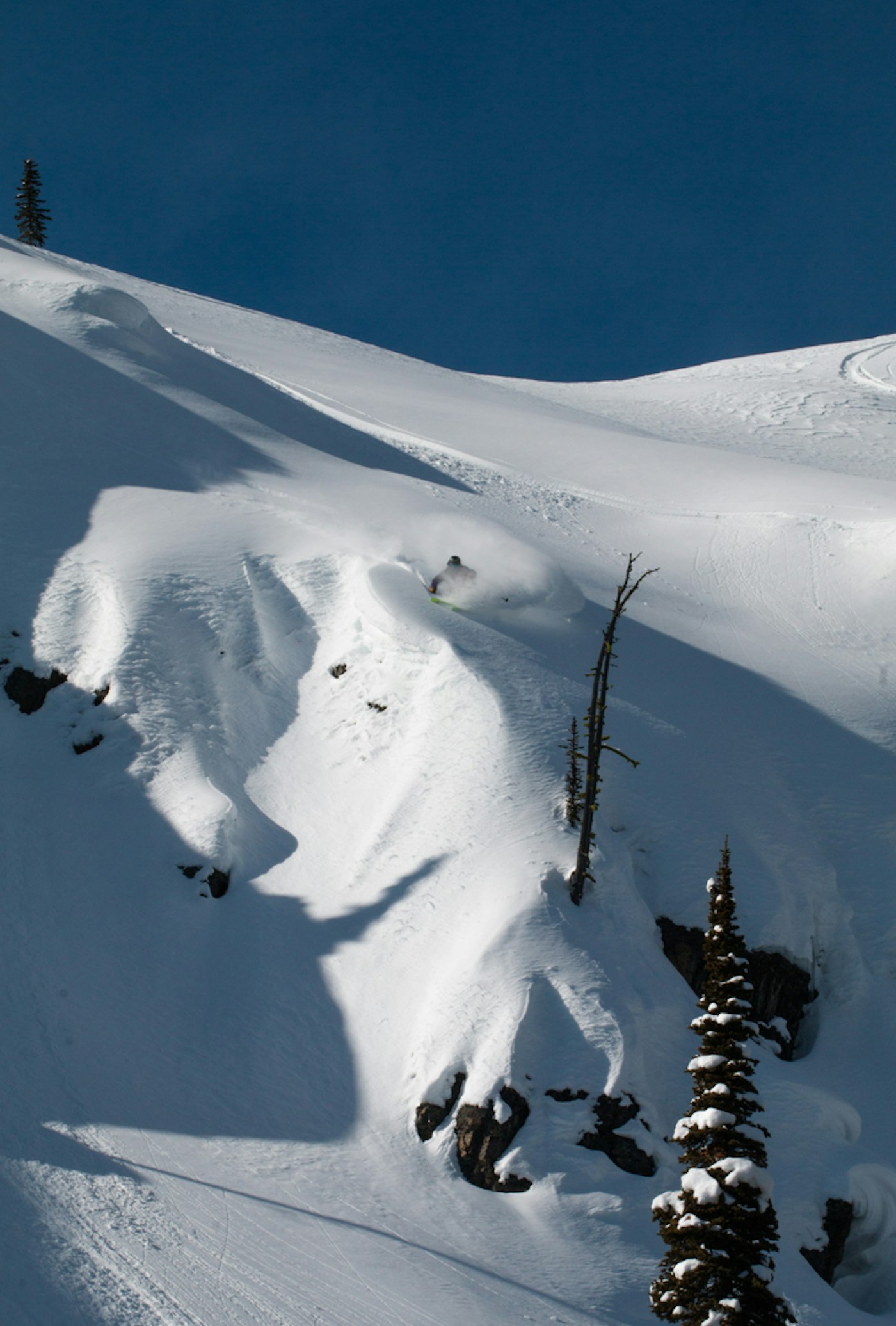
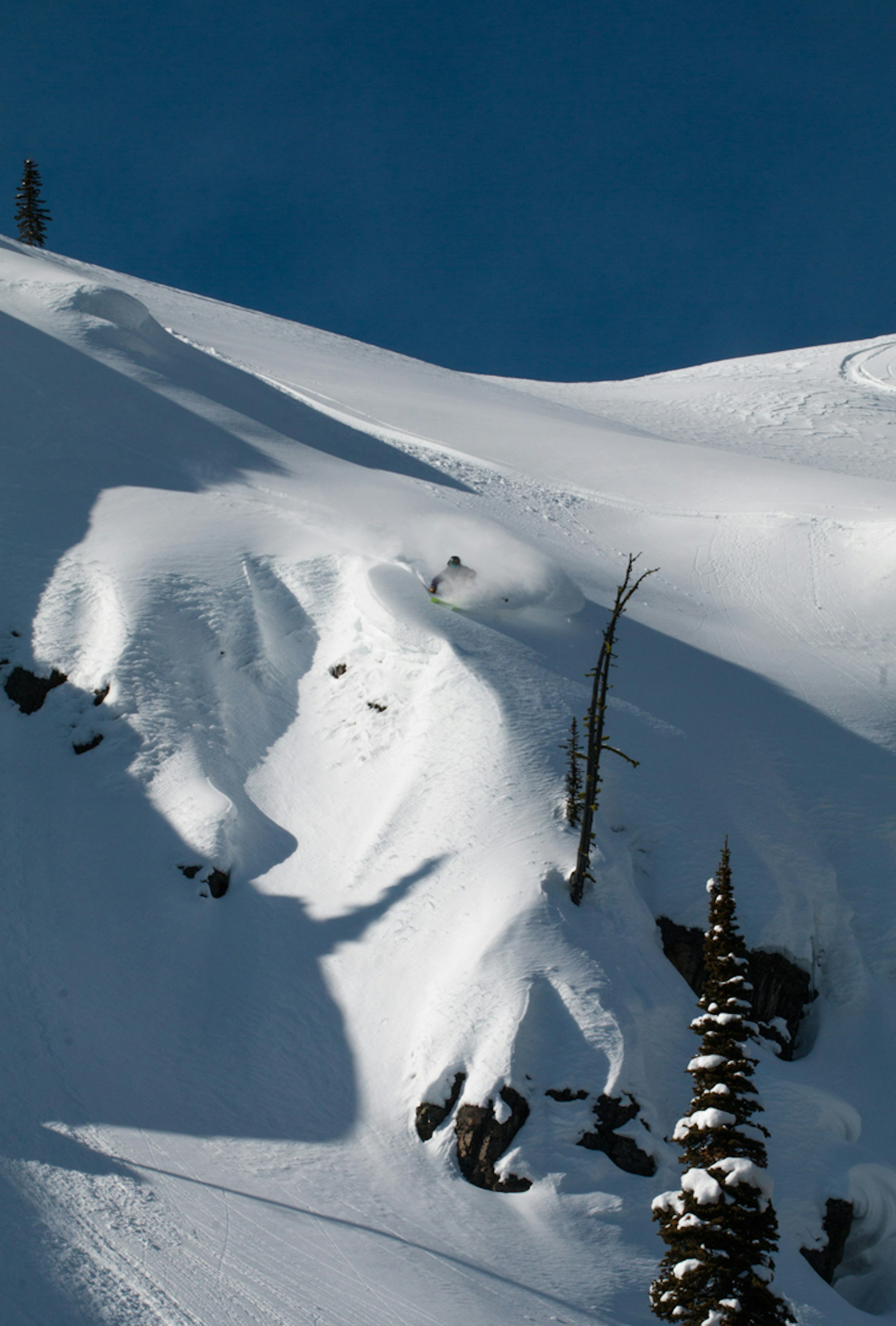
Micro-golf after a day of skiing pillows, some lines successfully, others not.
During the middle of our time in Seeley we awoke one morning to a cold camper. Not a good sign. We discovered that our batteries were insufficient to run our furnace or start our generator, so we had to make a last minute run to Missoula—an hour away—to charge up. We parked at a KOA campground, Chris’s favorite accommodation, where we plugged in and got the trailer charged up.
We were in need of a day off anyways, so after we got the rig figured out, we hopped back in the truck and drove to a nearby hot spring for some R&R. We planned to head back to Seeley the following morning, but that plan was stifled when we awoke to -33 Fahrenheit temperatures and frozen propane tanks and lines. Again no heat, on one of the most frigid days I’ve ever experienced. This one proved to be a pretty minor fix, however; we unhooked our tanks, loaded them in the truck and drove around Missoula with the heat on high until they thawed out. Once we got it sorted, we were back on the road to Seeley where we’d spend a few more days.
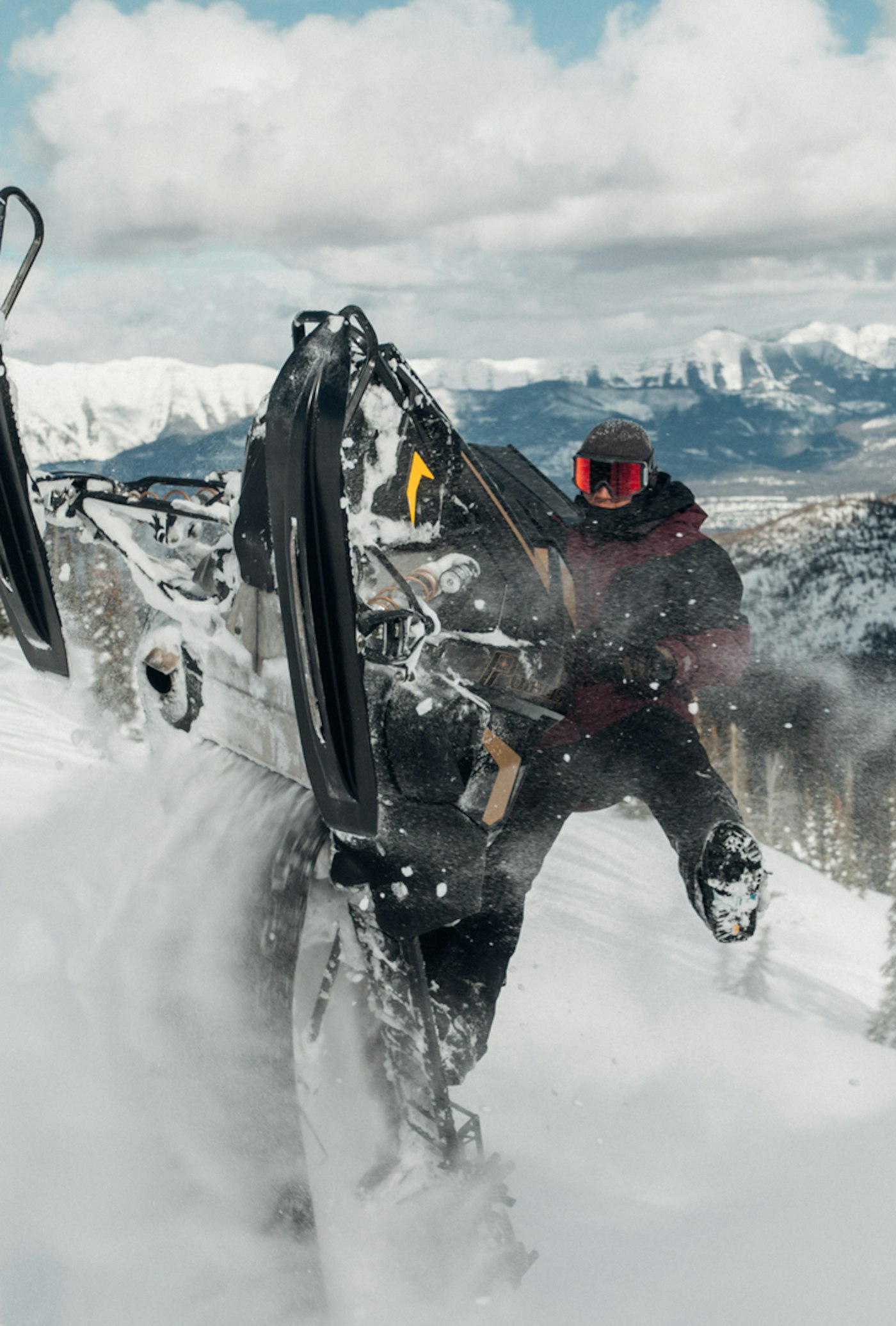
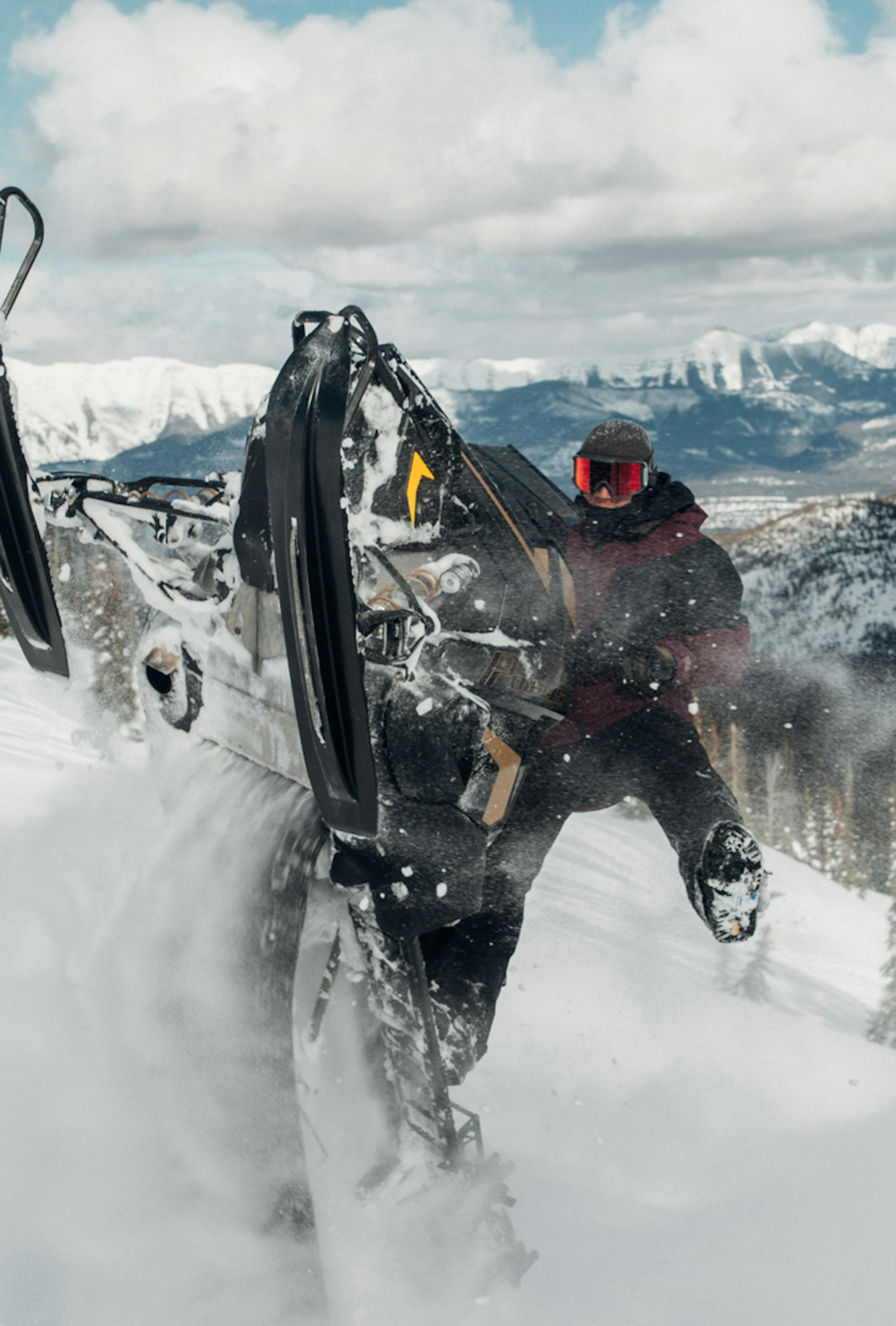
Chris is extremely proud of this tailstander.
The rest of our time in Seeley was smooth as could be. Kurt offered up some new zones so we knew where we were headed each day. We had a place to park, warmer temperatures, a few days of skiing and sledding under our belts, and even found a $1.50 shower available in the local laundromat. We had hit our stride after the fiasco of the first trip. It seemed we’d paid our dues to the rig gods and they finally granted us easy passage. We loaded up, said our Thank You’s to a town that had shown us nothing but amazing skiing and great hospitality, and headed east to a place I’ve always wanted to explore: Cooke City, MT.
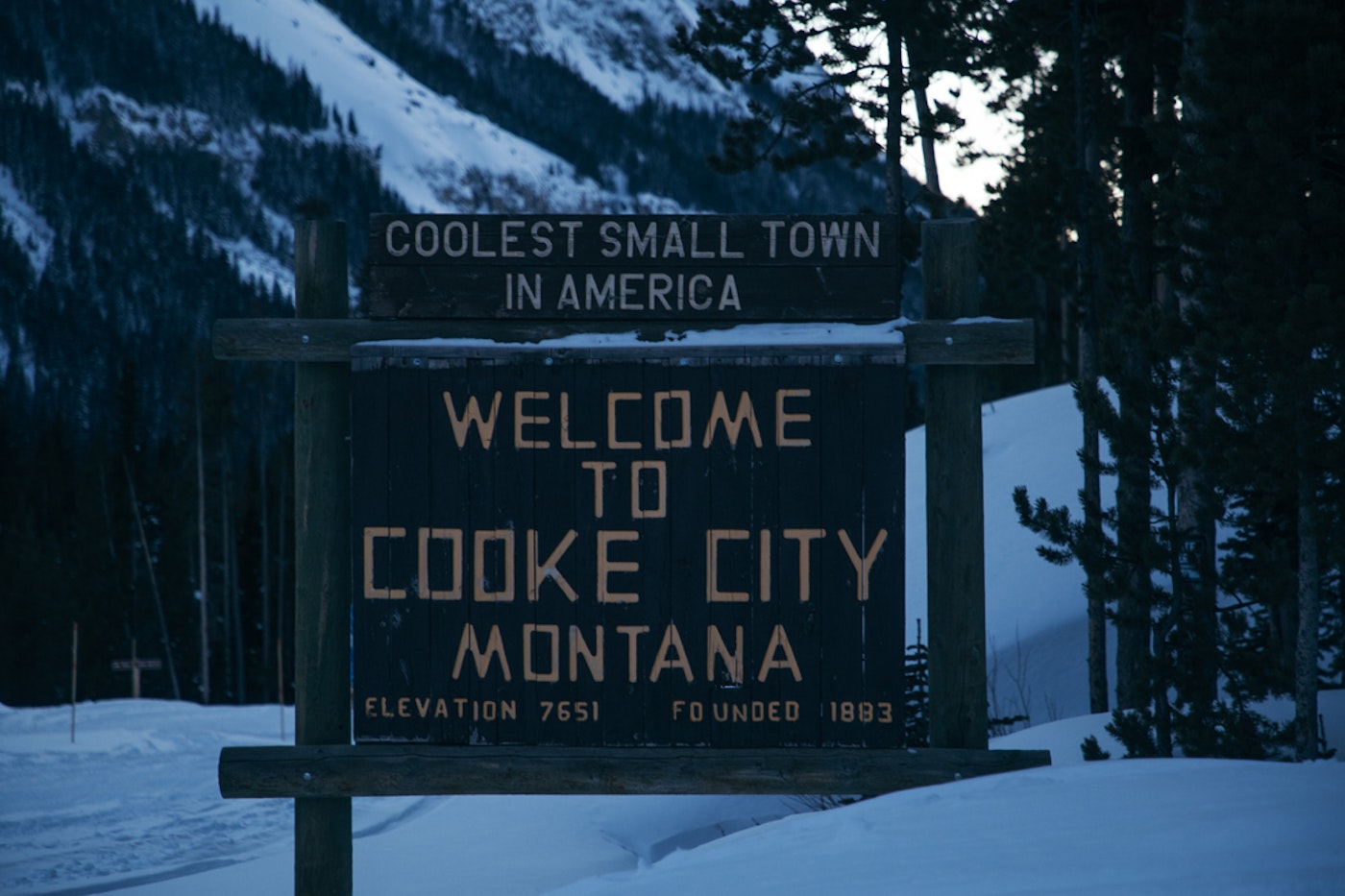
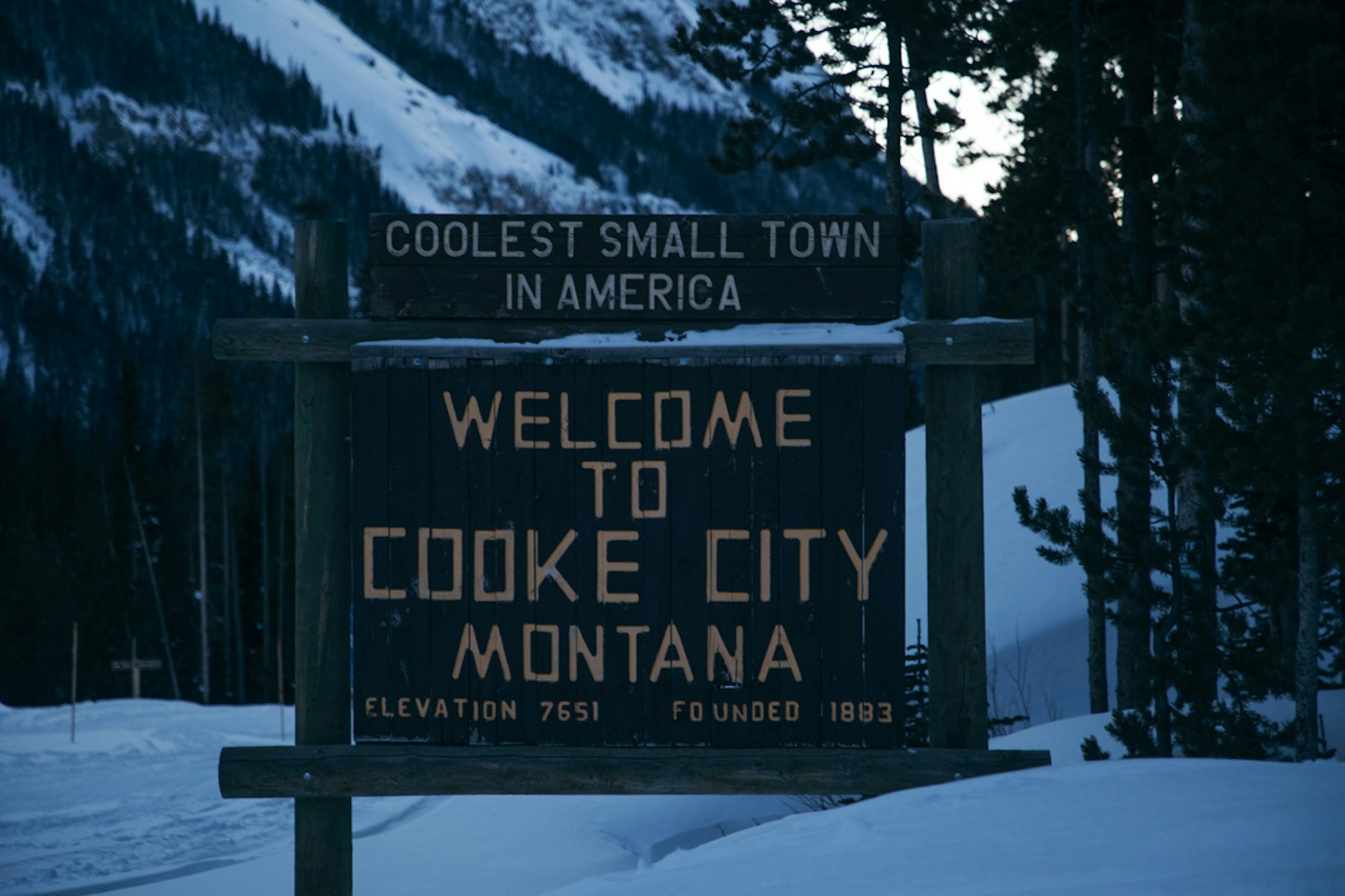
I tend to agree with Cooke’s town slogan.
Cooke immediately lived up to the hype. We pulled in on a Friday night and the town of 140 permanent residents was jumping. There wasn’t a car in sight on the roads, but they were crawling with snowmobiles. Celebratory weekend gunshots were going off in the distance, and everyone in town was buzzing with the prospects of skiing, snowmobiling or partaking in both the next morning. I felt like we’d made it to the last stronghold of the Wild West, but instead of horses and shootouts people were all about snowmobiling and skiing.
Chris and I did a lap up Main Street trying to find the free lot, and drove past the infamous Miner’s Saloon. There had to be at least 50 sleds parked out front. We found the lot, unhitched the camper and made our way to the saloon for a pizza and to enjoy the festivities.
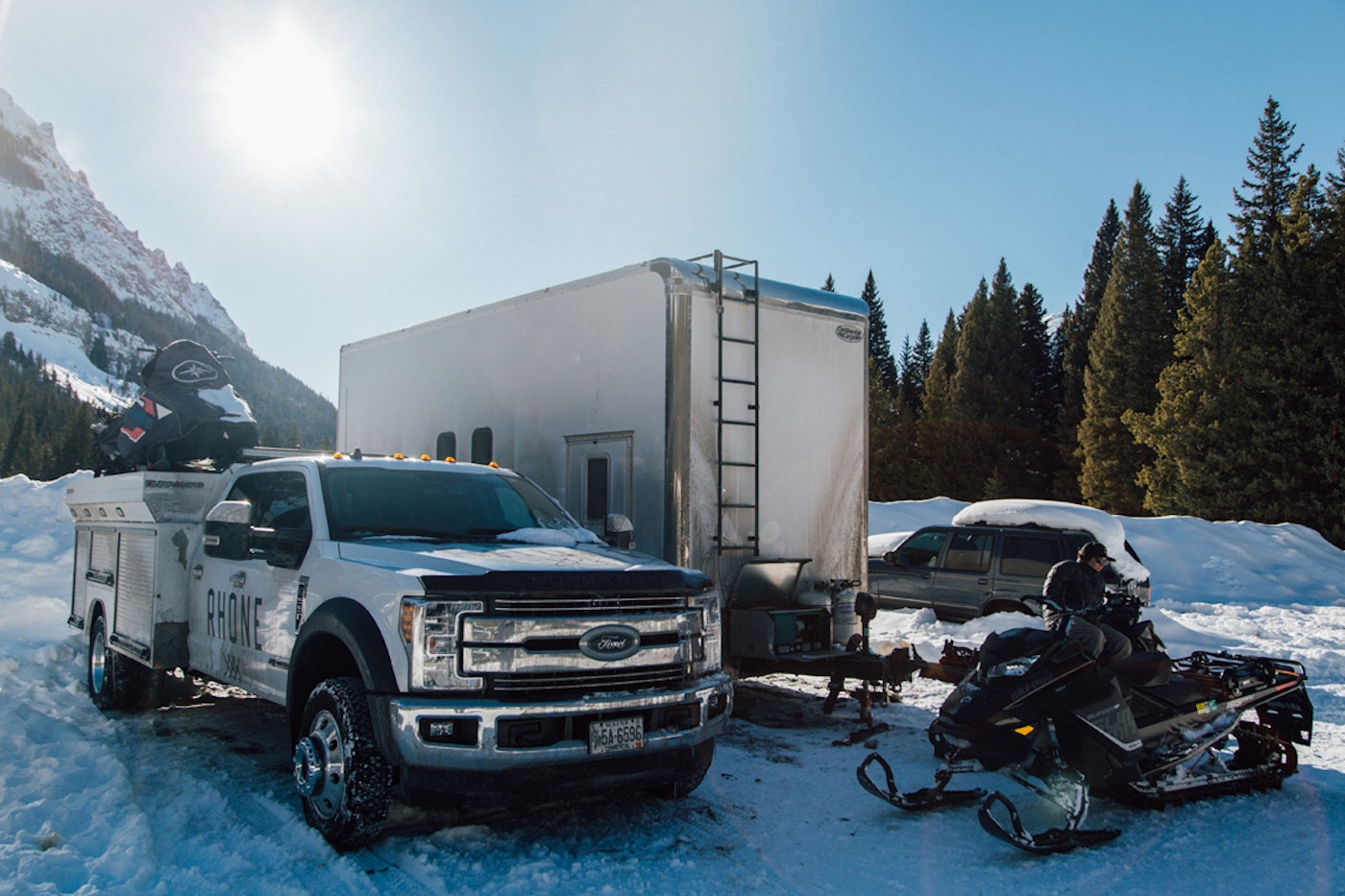
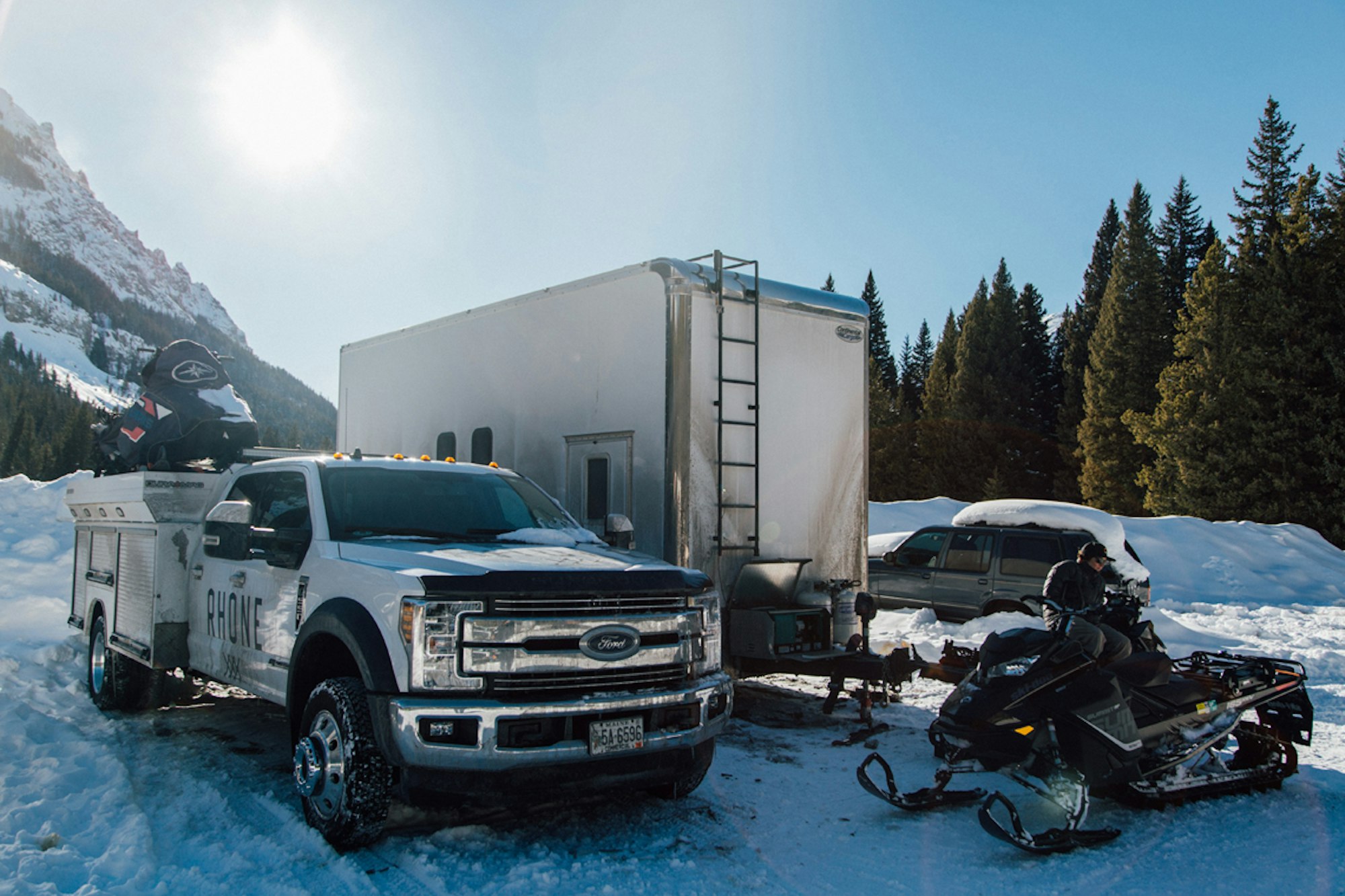
The campsite. Or maybe its a glampsite?
Our first day in Cooke we got into a bit of a pickle. We had been exploring for a couple hours, and swung by a warming hut for a bite to eat. Inside, I asked a couple locals where we should ride to find some good sled skiing terrain. They obliged and quickly showed us some zones, but when we actually got on our sleds, the weather turned ugly. We made it up and over the pass we were directed towards, but we got quite turned around in the alpine. Visibility was terrible and everything looked the same. We started riding toward the pass we thought we came over, but then realized it was completely different. We backtracked for a bit, found a steep hill that people had been using, and descended in hopes of finding the groomer we rode up on. At the bottom, the groomer was nowhere in sight. Chris tried to ride back up the hillclimb we’d just came down with no luck. After rolling his sled once and getting stuck on his second attempt, he was over it. We parked at the bottom where I remembered that my Garmin InReach was tracking. I pulled it out and got on the map. Realizing we were nowhere near where we thought, I used the InReach to help us navigate back to a groomed trail. Needless to say, we were both psyched when we found it.
Lesson learned: Don’t venture into the alpine in bad visibility without an exact idea where you’re headed and how to get there.
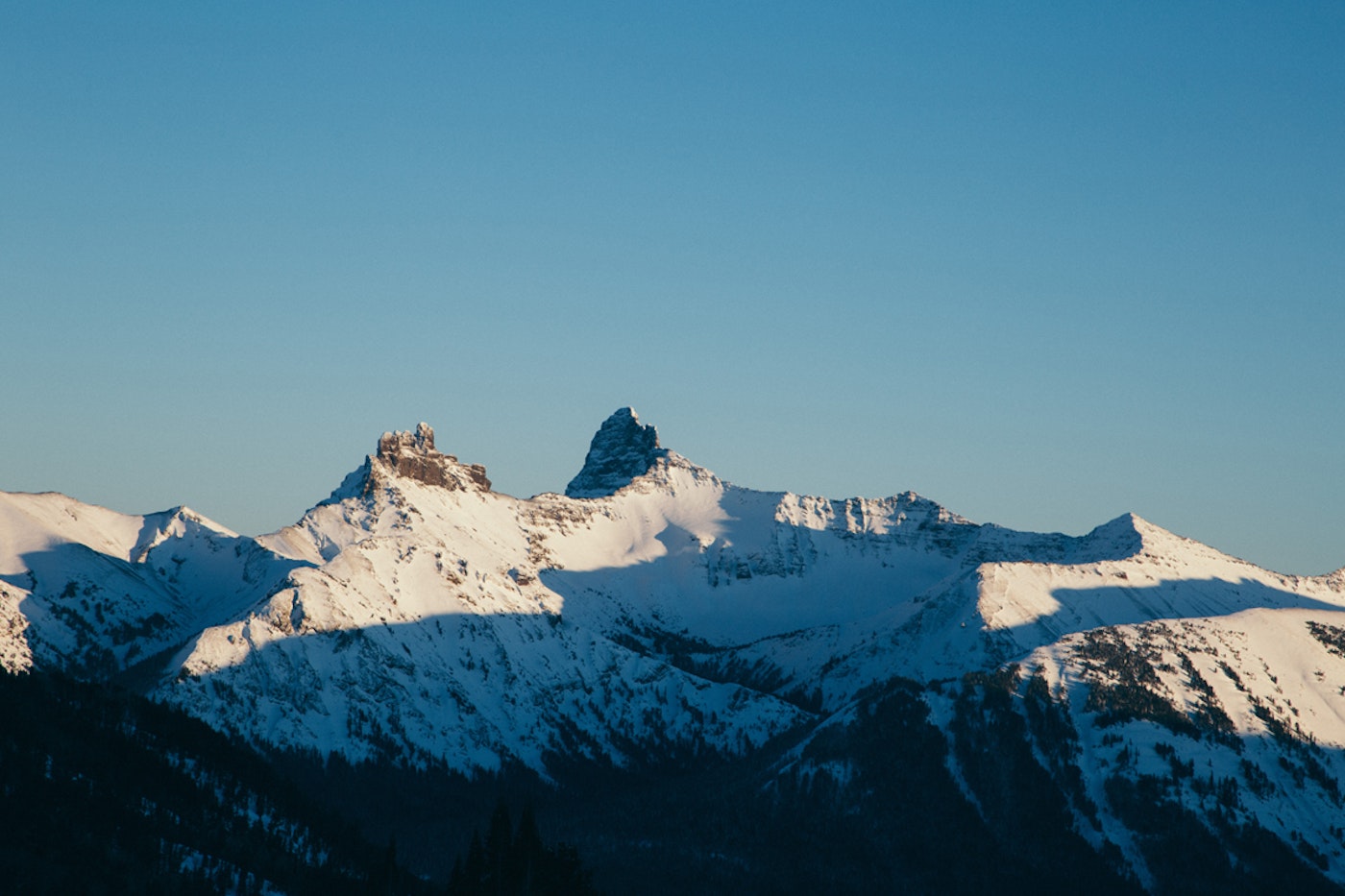
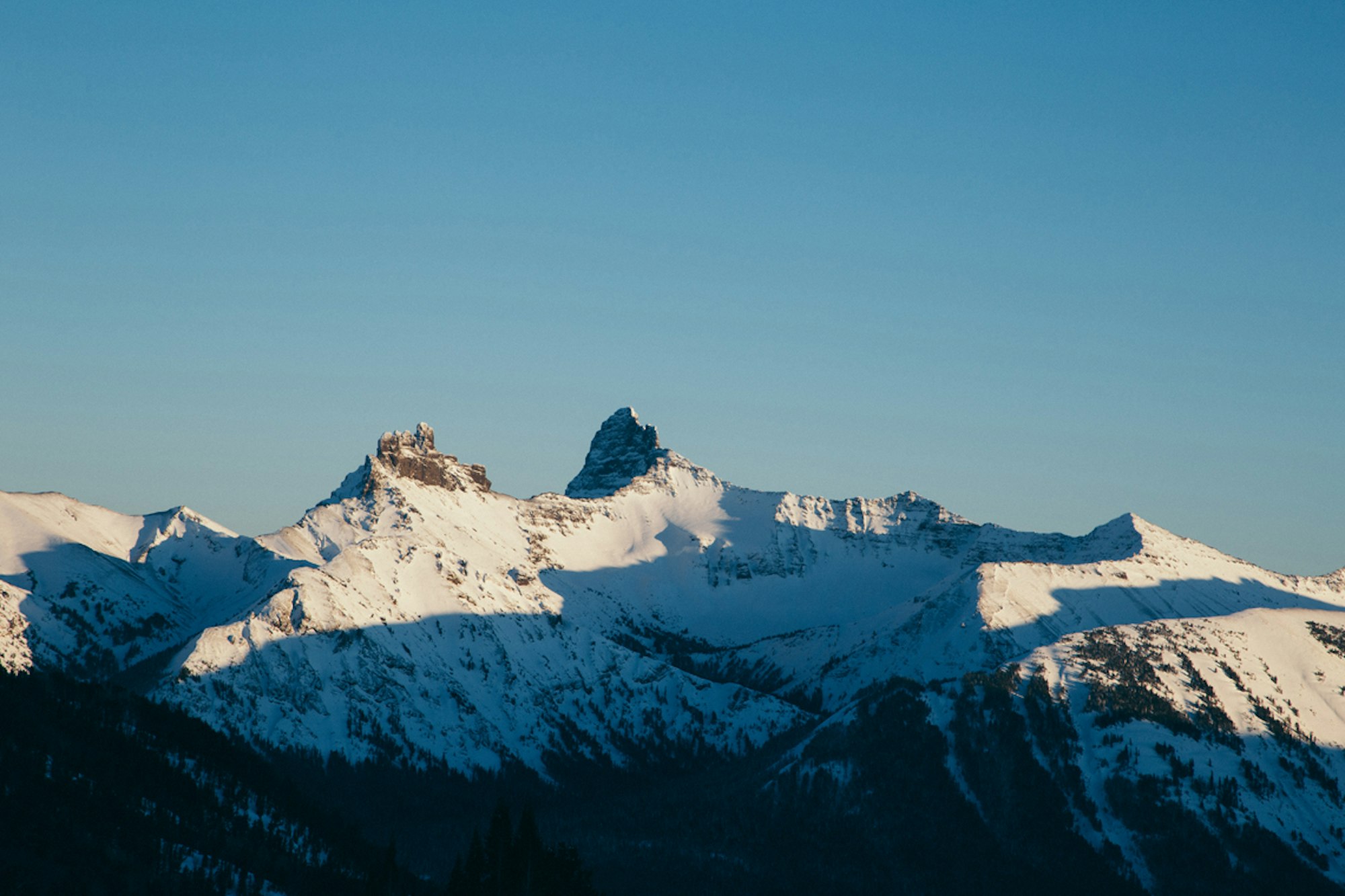
When we got back to the trailer, I pulled out the map again to see where we had ridden that day. Turns out that throughout the day we’d actually covered a majority of the zone. While we didn’t exactly see things to ski in the bad visibility, we at least got a sense of where we should go back to the next day.
Day Two: We found what we were looking for. The place is riddled with small cliff drops and hits we like to call “Mini Golf,” and is surrounded by stunning, huge peaks. In this zone, we found that there is literally a little bit of every kind of terrain any skier would ever dream of skiing in the backcountry. I did some subpar skiing on a couple of Mini Golf lines, and at the end of the day we found some amazing looking pillows that we’d plan to hit the next day.
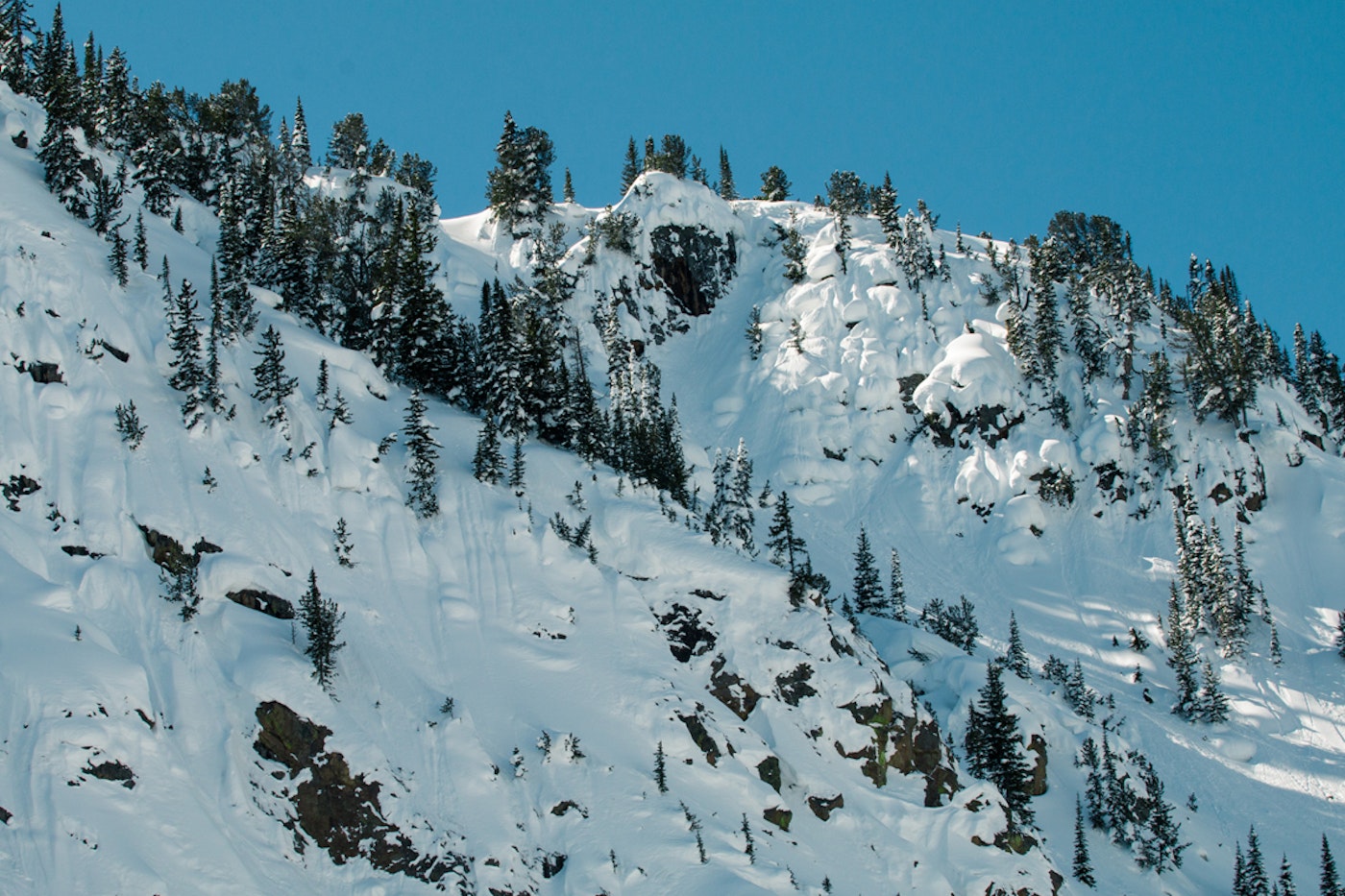
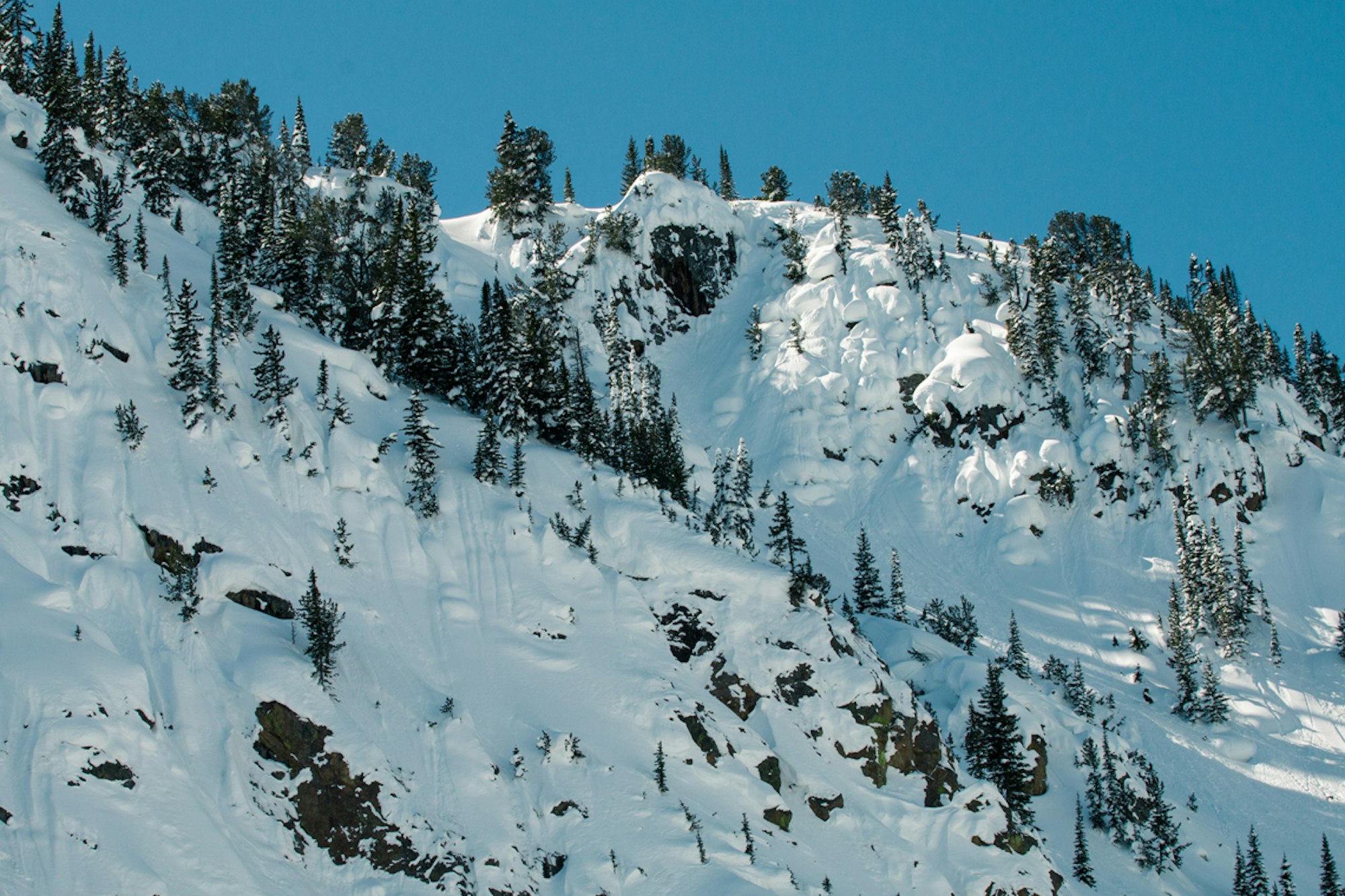
Day Three in Cooke City was probably our most productive day of the season thus far. In the morning, we went straight for the pillows we’d found the day before. We dug a snowpit at the top to look for a weak layer of snow and, unable to find the weak layer, with all of our stability tests coming back solid, we decided it was “go time” to ski these drool-worthy pillows.
Between Chris and I, we must have put 10 laps on that zone in a single day—huge numbers compared to our normal sled-to-ski ratio. We both went home that night satisfied with tired legs and stoke levels through the roof: I’d skied the rowdiest lines of my short pillow-skiing career, Chris didn’t get stuck on his sled a single time (a momentous accomplishment), and we both felt like we were starting to get the hang of things.
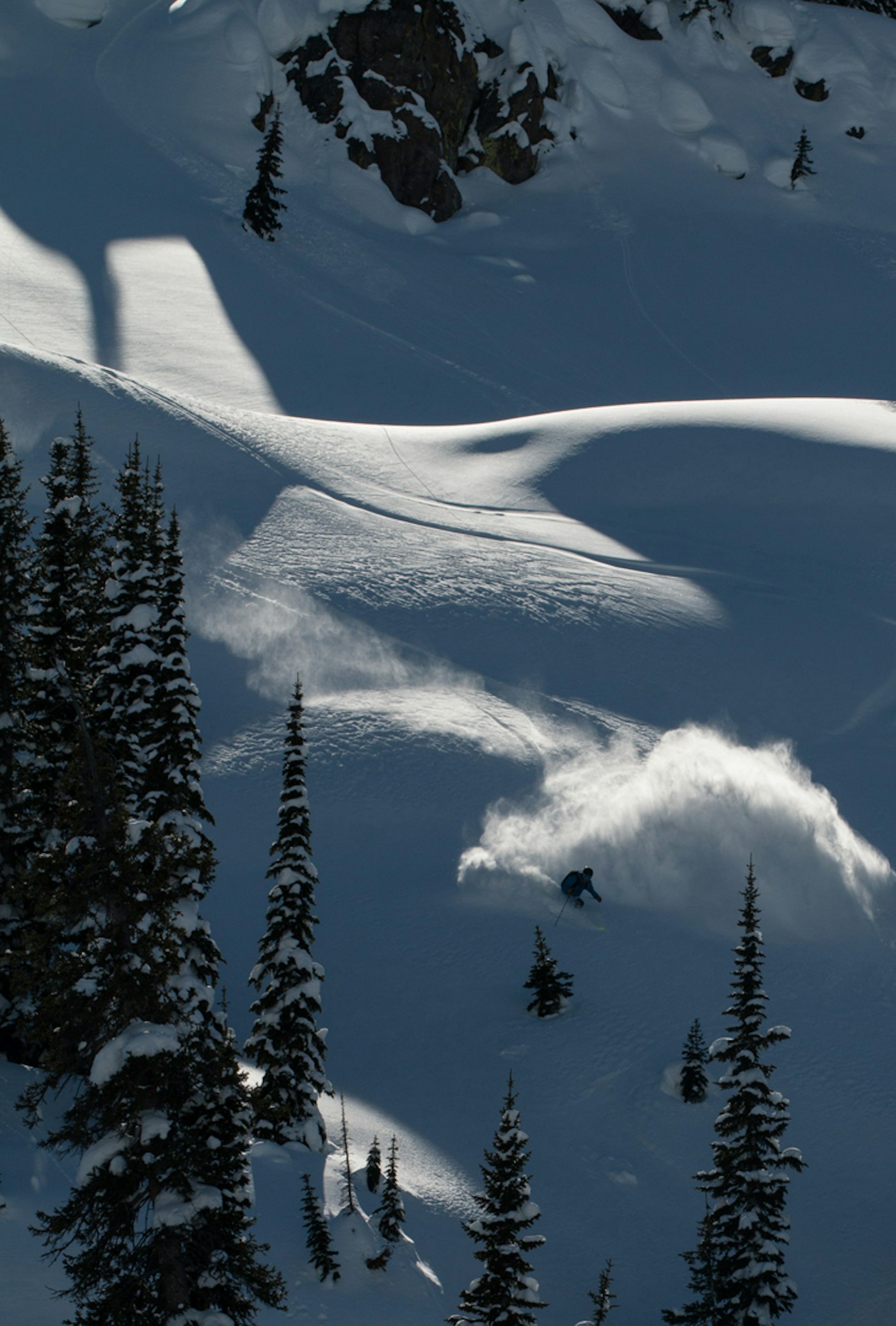
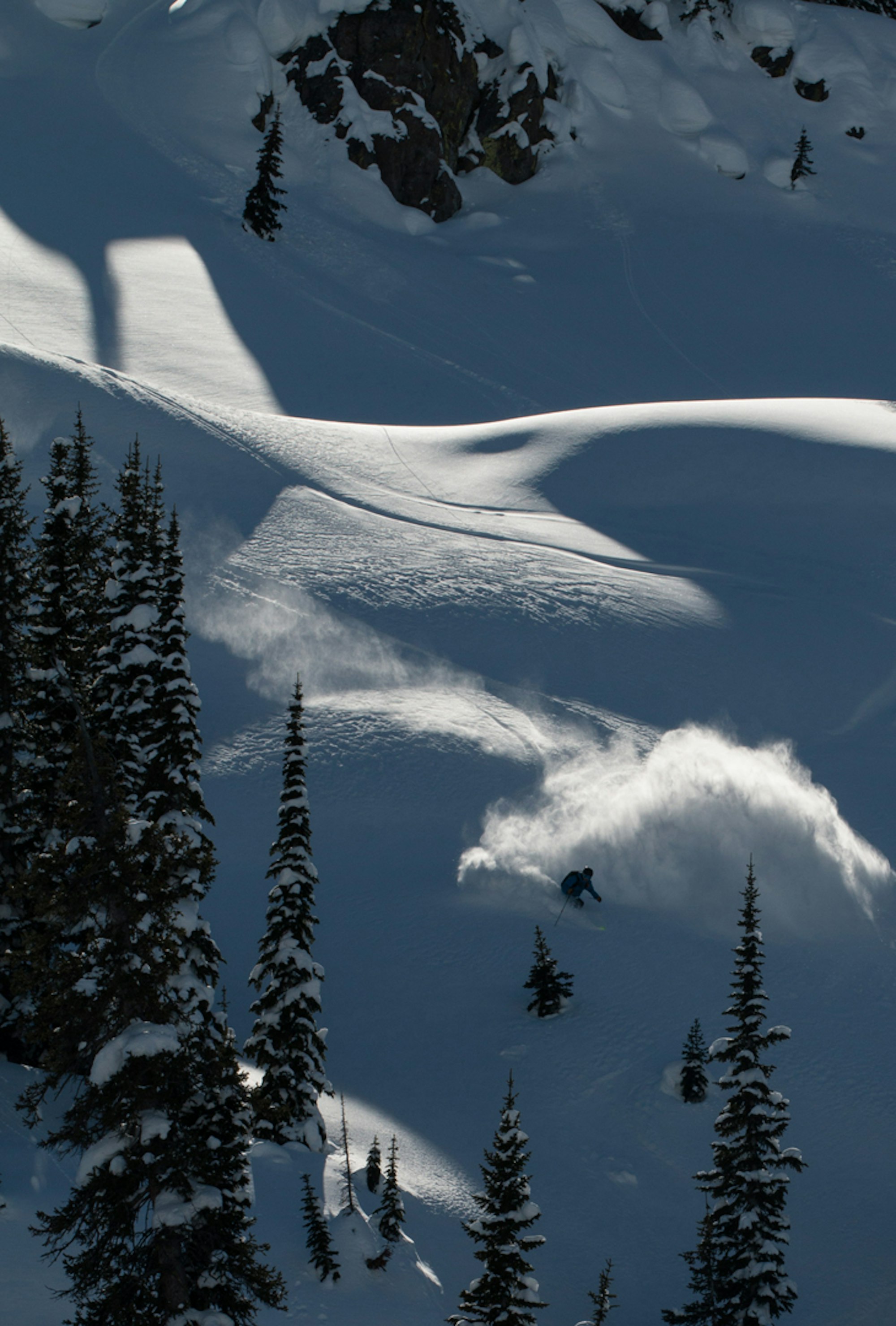
High quality turns after skiing some bigger lines.
Looking back, Montana left a big impression on me. The number of mountain ranges are immense and there’s a lifetime skiing to explore out there. I was drooling through the truck window as we headed home from Cooke. Huge mountains riddled with Alaska-looking lines tower over the road as you drive through Yellowstone National Park. I will definitely be coming back.
I learned a lot on this trip, luckily this time less about problem solving on the rig and more about skiing. I realized that an immense amount of effort goes into this type of skiing. Things that most people never think of end up taking the most time out of your day. Driving, snowmobiling, prepping gear, hiking, getting your camera’s equipment prepped and the list goes on and on. My goal had been to get one shot a day, and oftentimes it’s literally an entire day’s work to get that one sub-30 second shot. In a way, it’s a lot like mogul skiing: I spent my entire life working toward the goal of getting one sub-30 second competition run in the Olympics. But at the same time—and more obviously—it’s very different. There are no coaches, team managers, nutritionists, PT’s or trainers helping you accomplish your goals. Instead it’s just Chris and I, just a couple of rookies trying to learn how to ski in new terrain and catch it on film.

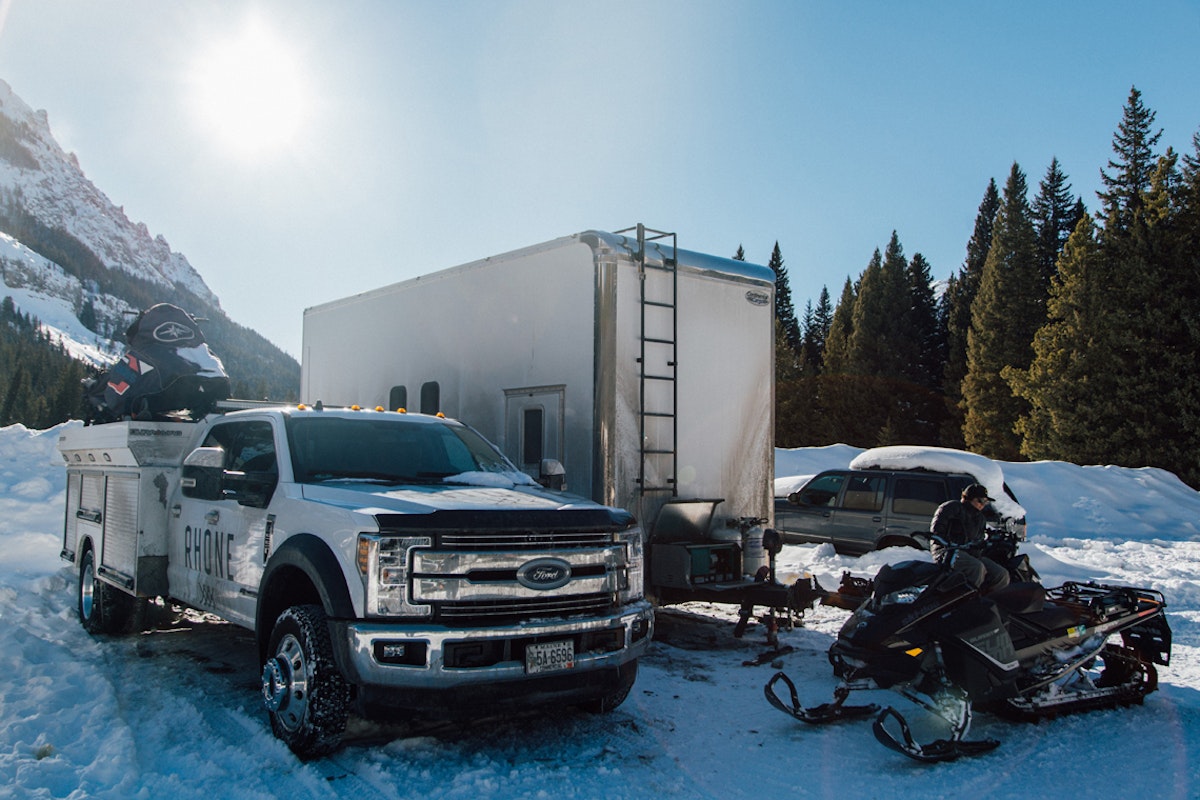


![[GIVEAWAY] Win a Head-to-Toe Ski Setup from IFSA](https://www.datocms-assets.com/163516/1765920344-ifsa.jpg?w=200&h=200&fit=crop)

![[GIVEAWAY] Win a Legendary Ski Trip with Icelantic's Road to the Rocks](https://www.datocms-assets.com/163516/1765233064-r2r26_freeskier_leaderboard1.jpg?auto=format&w=400&h=300&fit=crop&crop=faces,entropy)
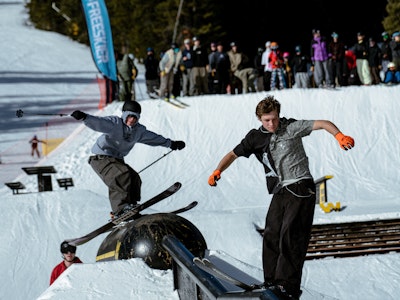




![[GIVEAWAY] Win a Head-to-Toe Ski Setup from IFSA](https://www.datocms-assets.com/163516/1765920344-ifsa.jpg?auto=format&w=400&h=300&fit=crop&crop=faces,entropy)
